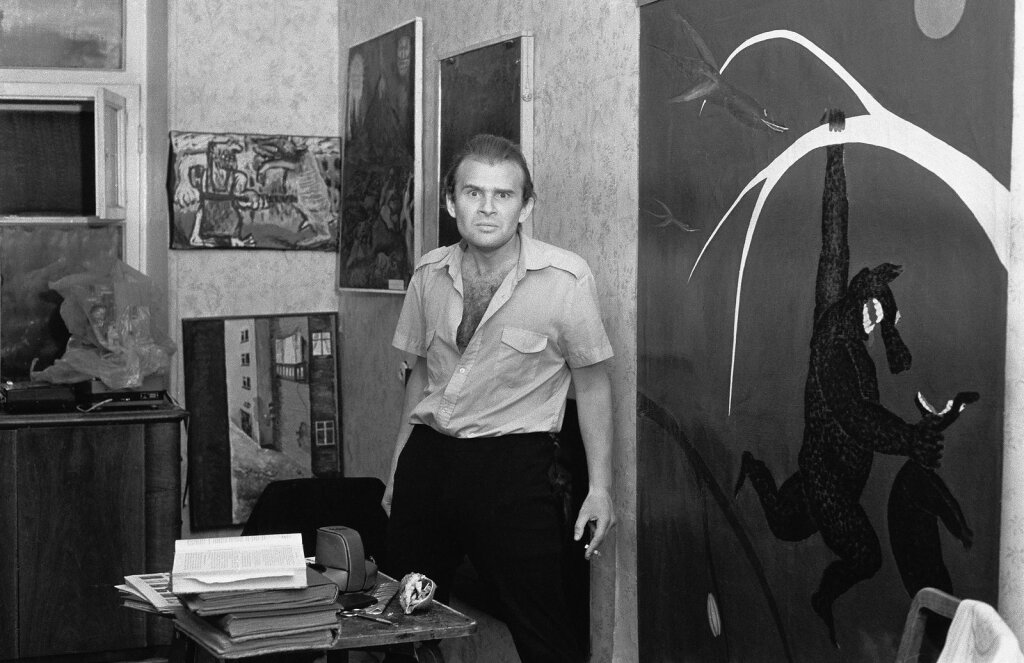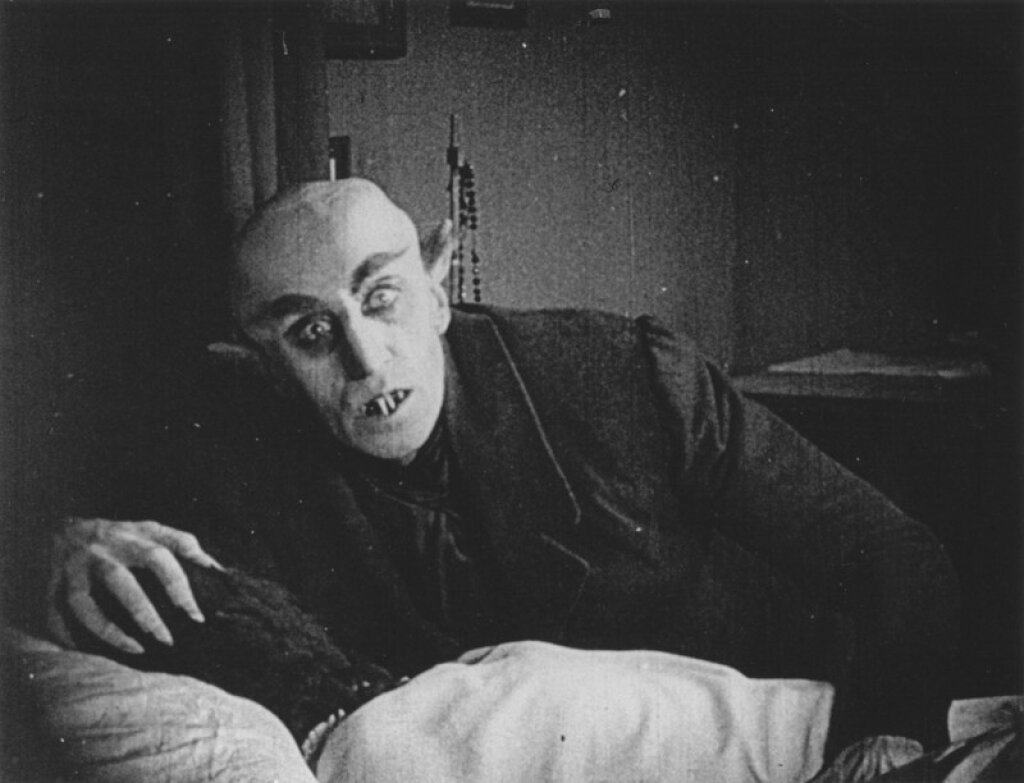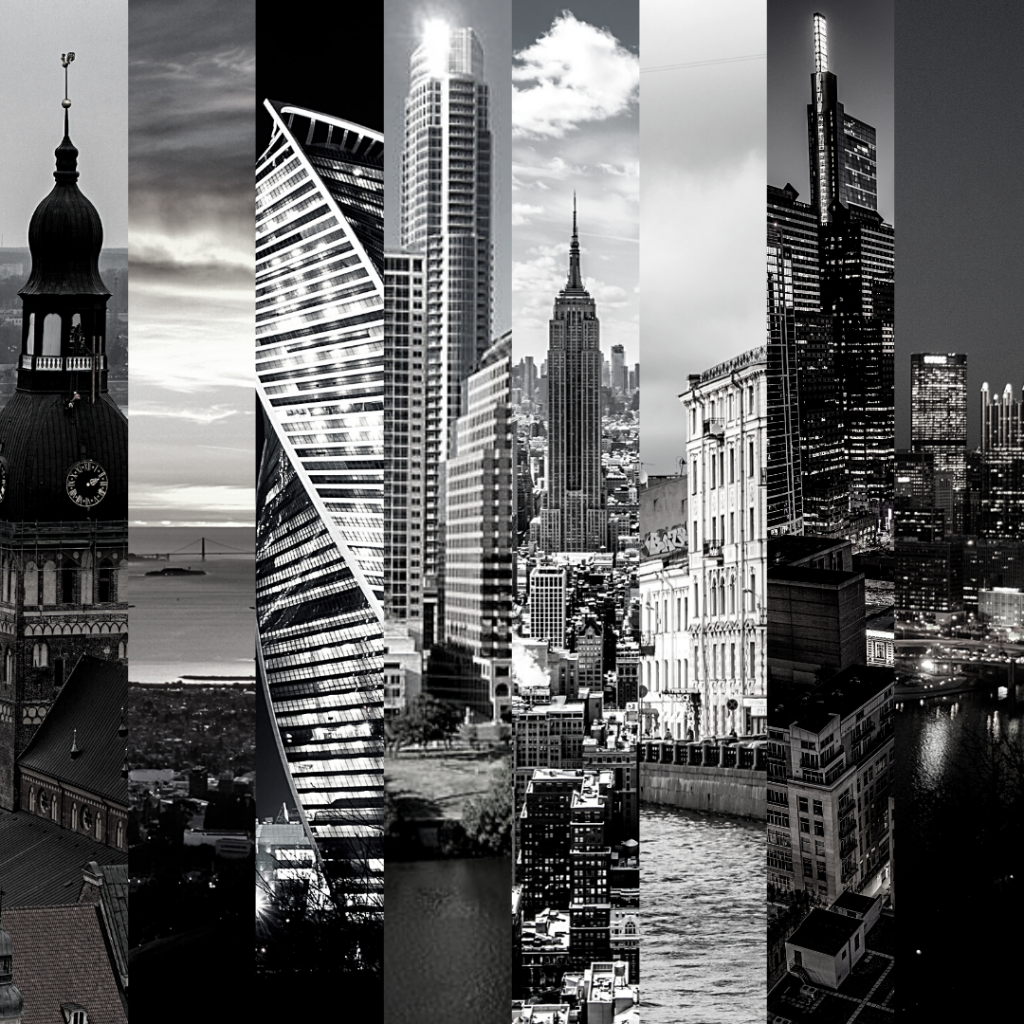David Bering-Porter is Assistant Professor of Culture and Media at the Eugene Lang College of Liberal Arts at The New School.
[Note: This is Part II of a two-part post. Part I may be found here.]
It is important to note that these “violent” happenings and provocative eruptions into the public were not typically dangerous to passers-by, only disturbing to the senses and sensibilities of the typical citizen or subject. Because of the protective screen of cinema, the necrorealists began to document their lives and happenings using both photography and cinema, and the early short films such as Vesna (Yevgeny Yufit, 1987) show off some key elements of their aesthetic.
[embed]https://www.youtube.com/watch?v=ByPy9YSN7Z8&feature=youtu.be[/embed]
The narrative of the film is loose, at best, and seems to be governed less by a straight-forward narrative arc and more by a series of events or scenarios, brought together through an associative or affective logic. Themes that will develop into a more explicit interest in biology and bare life are, here, present in the form of a strange relation to the body, both violent and uncomfortable. Scenes composed of writhing bodies, dressed in rags, on a train-track; ropes, and a what appears to be a strange parody of a military officer seems to stage a tension between those on the periphery of society and those in charge of maintaining the social order. These themes appear again and again across the necrorealist movement, albeit in highly variant forms. Yet, the tension at the heart of necreorealism has to do with this aesthetic relationship to life itself. Yurchack describes in the passage quoted above that the lifestyle of necreorealists was so “densely aestheticized” that the act of living in one’s own body turns to become art, and it is this turning that I would like to consider next.
What exactly turns in this process of aestheticization? At first glance, Yurchack’s comment seems to suggest the clichéd notion that life becomes art. Yet, in the turn towards art, a deeper process is revealed in the relation of aesthetics and technology to the life process through the medium of the camera. In Camera Lucida, Roland Barthes famously describes the photograph as a sign that “doesn’t quite take” a sign that “turns, as milk does.” What Barthes is referring to is the photograph’s direct, physical connection to its referent, and the way that it seems to inscribe and embalm some element of its referent within the photographic solution. The photograph captures its object, arresting it, and pins it there in an image like a butterfly under glass. Unlike a normal sign, such as a word, which indicates the idea or object in question with the comfortable distance of metaphor or symbol, the photograph carries something of its referent with it. “The referent adheres,” as Barthes says. From his example of milk, Barthes is clearly thinking of this turning as a kind of rot, a going-off, the way something goes-off in the refrigerator, but we can also think of this turning as a movement or a passage from subject to object. Barthes says it best when he describes his own experience of being photographed: “Photography transformed the subject into object and even, one might say, into a museum object … the photograph … represents that very subtle moment when, to tell the truth, I am neither subject nor object but a subject who feels he is becoming an object: then I experience a micro-version of death (of parenthesis): I am truly becoming a specter.” Through Barthes’ incisive discussion of photography, we can see the way that the process of aestheticization, the turning of living into a work of art practiced by the necrorealists, is also a turning in the sense that Barthes described – a turning from living subject to dead object, or rather, to something in between. I said before that that aesthetics of necrorealism brought us to a question of the undead, and here Barthes shows us that this takes place explicitly through the representations of their work but also through their relation to media itself.
Like Barthes being photographed, the necrorealists find themselves becoming an object through the medium of the camera and in the aestheticization of living that they experience and practice, we can also detect this movement, this turning towards some indistinct state between life and death, animate and inanimate, subject and object. It is through object-hood that they find themselves safe, free. In their fantasy, they find themselves able to distance themselves from, and engage with, art as an escapist practice where the body is free from political subjugation, and they are free to rot, and live, as they so choose rather than at the edict of government policy. Barthes describes himself becoming a specter and the necrorealists express something similar, not through a retreat to the im-mediacy of experience, but to the brute realities of physical, animal life and this line between life and death becomes an explicit theme in the necrorealist’s work. Once again, Yurchak speaks to this in regards to their early short films, and he is worth quoting here at length: “One moment they looked like recognizable heroes of socialist realism – soldiers, sailors, scientists, doctors, officials; the next they looked like the insane or the ‘living dead,’ swathed in bloody bandages and plastered with zombie clay.” Again, Yurchak, “These characters ran and fought, performed strangely agitated activities and homoerotic acts, or simply wandered around aimlessly. The films made references to the process of transformation from life to death, to various stages of cadaver transformation and biological decomposition, to multiple attempts at suicide that fail, to various wounded, bandaged, crawling and drowned characters.”
The reference to Giorgio Agamben's notion of bare life is quite deliberate, since he, following Michel Foucault, emphasized this as the result of a political and economic machinery that reduced the human to a state between life and death, or between the symbolic death of the subject and the physical death of the body. As Yurchak states in an another work on the topic that explores the field of “absolute dying”, “This zone and the peculiar personhood associated with it were the true objects of the Necrorealist explorations. Therefore, Necrorealism, in contrast to what the term may misleadingly suggest, is interested not in death but in alternative forms of vitality – in nonpersons who inhabit the blurry zone between life and death.” He goes on to point out that “Life and death are equally uninteresting for the Necrorealists; they are important to them only as two (among many) external referents vis-à-vis those to which they construct their real object and metaphor of visual representation – an alternative vitality that dwells in the blurry zone of in-betweenness (between life and death, between human and animal, between sane and insane, etc.).” As a key characteristic of this in-betweenness, undeadness is not just a turning, but actually a re-turning. It is a transition or passage into a zone of indistinction, a move through death and back again. What I have described here as an aestheticization transforms the vitality of the living being, but it does not extinguish it. Rather, as a kind of undeadness, this vitality returns, becoming uncanny. This mediation does to life what photography does to the sign; like milk, it turns, but in it there is also a process of homogenization or a general equivalence that starts to take place in this zone of indetermination. It would be difficult to say whether this is a deliberate result, or an accidental byproduct, but the resonances between this general equivalence between life and death and the general equivalence described under the conditions of global capital seem hard to ignore.



